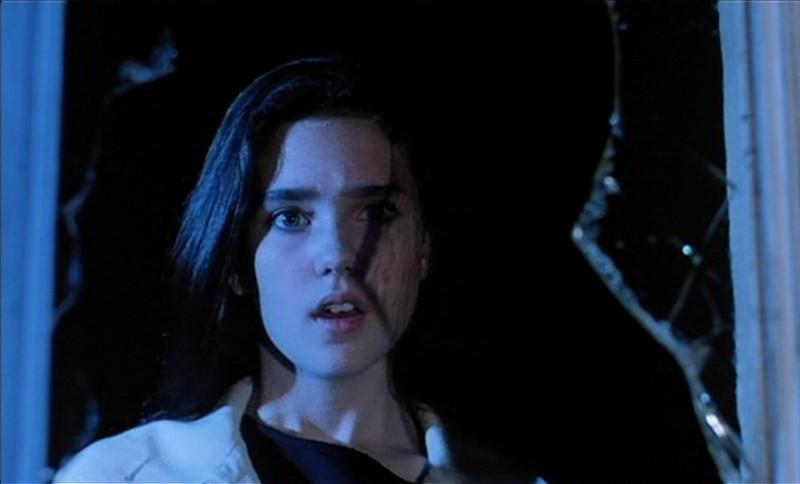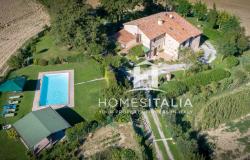Halloween is not an Italian tradition by any means. The traditional mid-autumn day in Italy is All Saints on the 2nd of November, known also as the "day of the dead". There are special church services, people go to the cemetery taking flowers and candles to the graves of deceased relatives and friends, and in the South of Italy, in Sicily in particular, children find presents `brought' to them by the "muorti", those members of the family who are no longer with them.
However, over the past ten years, through the influence of films, TV shows and the power of marketing, Halloween has become more widely known in Italy and is now celebrated as well. Not many children go from house to house for "Dolcetto o scherzetto" yet, the Italian version of "Trick or treat?", but carved pumpkins, Halloween theme parties and nights at home watching scary movies with friends are becoming really popular.
This is why we thought that this year, on the 31st of October, you might want to get scared Italian style watching one of Italy's classic horror masterpieces. But be afraid, be very afraid! as Italian horror movies are particularly bloody and gruesome with style and strong emotion taking over logic and realism, and have been often censored both in Italy and abroad. This is definitely just for adults.
Here is a quick guide to those we consider three of the best Italian Horror movies' directors: Mario Bava, Dario Argento and Lucio Fulci.
Mario Bava
 Mario Bava is one of the greatest names from the "golden age" of Italian horror films. The work of this "maestro" has proved very influential and a source of inspiration for people like Martin Scorsese, Tim Burton, Joe Dante and John Landis. Federico Fellini, David Lynch and Tim Burton homaged Bava quoting particular scenes of his work respectively in Toby Dammit in Histoires extraordinaries (Spirits of the Dead), Twin Peaks' last episode and Sleepy Hollow. Quentin Tarantino claims that behind each shot in his movies there is the inspiring genious of Mario Bava.
Mario Bava is one of the greatest names from the "golden age" of Italian horror films. The work of this "maestro" has proved very influential and a source of inspiration for people like Martin Scorsese, Tim Burton, Joe Dante and John Landis. Federico Fellini, David Lynch and Tim Burton homaged Bava quoting particular scenes of his work respectively in Toby Dammit in Histoires extraordinaries (Spirits of the Dead), Twin Peaks' last episode and Sleepy Hollow. Quentin Tarantino claims that behind each shot in his movies there is the inspiring genious of Mario Bava.
We suggest two of his movies here:
-
The 1963 Black Sabbath (Italian: I tre volti della paura), which inspired the omonimous English heavy metal band, influenced Quentin Tarantino's Pulp Fiction and Roman Polanski's The Tenant. The film comprises three horror stories, "The Wurdalak", "The Drop of Water" and "The Telephone." The first and last episodes were heavily censored in the US.
-
The 1977 Shock (also known as Schock, and Beyond the Door II) was Bava's last film before he died of a heart attack in 1980.
Lucio Fulci
 Known as the "Godfather of Gore", Fulci was a director, screenwriter, and actor known especially for his directorial work on horror films, although he made films in genres as diverse as thriller, western, and comedy.
Known as the "Godfather of Gore", Fulci was a director, screenwriter, and actor known especially for his directorial work on horror films, although he made films in genres as diverse as thriller, western, and comedy.
We propose: the 1972 Don't Torture a Duckling, (Italian: Non si sevizia un paperino).
The film is significant within Fulci's filmography as it is one of the first in which he began using violent gore effects, something he would continue to do in his later films, such as Zombi 2, The Beyond and City of the Living Dead. The soundtrack was composed by Riz Ortolani and features vocals by the wonderful Ornella Vanoni.
When the film was first released in Europe, it was blacklisted and banned due to a subplot that criticised the Roman Catholic Church. It was never seen in America until the early 2000s, when it was released uncut on DVD.
Dario Argento
 Dario Argento is currently the most famous Italian film director, producer and screenwriter in the horror film genre.
Dario Argento is currently the most famous Italian film director, producer and screenwriter in the horror film genre.
In the 60's, he began his career as a screenwriter and worked for Sergio Leone on the classic spaghetti western Once Upon a Time in the West. Soon after that film's release in 1969, Argento started working on his debut movie, The Bird with the Crystal Plumage - L'uccello dalle piume di cristallo - which was released in 1970 and was a major hit in Italy. Memorable movies are also Deep Red, Profondo Rosso, Suspiria, Phenomena, The Stendhal Syndrome and Opera.
In all of his movies, Argento casts himself as the killers' gloved hands. However, in recent releases, he has stopped this practice.
We list two of Argento's classics for you:
-
The 1975 Deep Red (or The Hatchet Murders. Italian: Profondo Rosso) has often been considered by many critics as the best thriller ever made. With this movie Argento achieved international fame and inspired a number of other directors to work in the genre. The story is set in Rome, but most of the scenes were actually shot in Turin. The movie is about a music teacher, Marcus Daly, as he investigates the violent murder of psychic medium Helga Ulmann, which he witnesses in an apartment building.
-
The 1996 The Stendhal Syndrome (Italian: La sindrome di Stendhal) starring his daughter Asia Argento, was the first Italian film to use computer-generated imagery. Argento's fans generally consider this as his best film of the 90's, which is also considered to be his most violent film ever.
Detective Anna Manni (Asia Argento) travels to Florence; on the trail of a serial killer but at a museum she gets struck by the Stendhal Syndrome, which causes people to become overwhelmed by great works of art, a weakness used by the killer against her.</p></li></ul><p>Here you find a BBC4 interview to Dario Argento by Newsnight presenter Kirsty Wark who met him in his horror shop in Rome named after his famous film Profondo Rosso.













